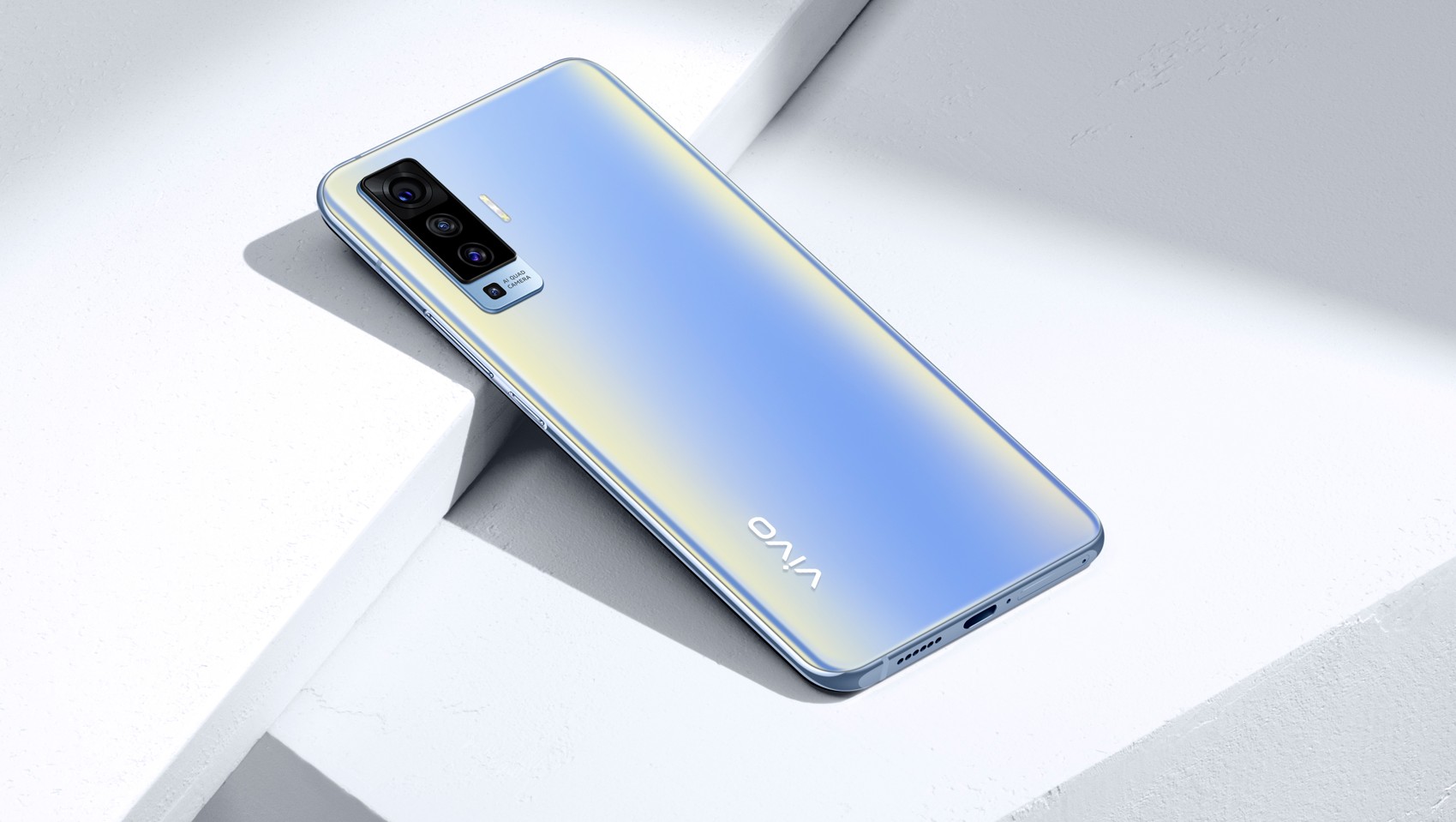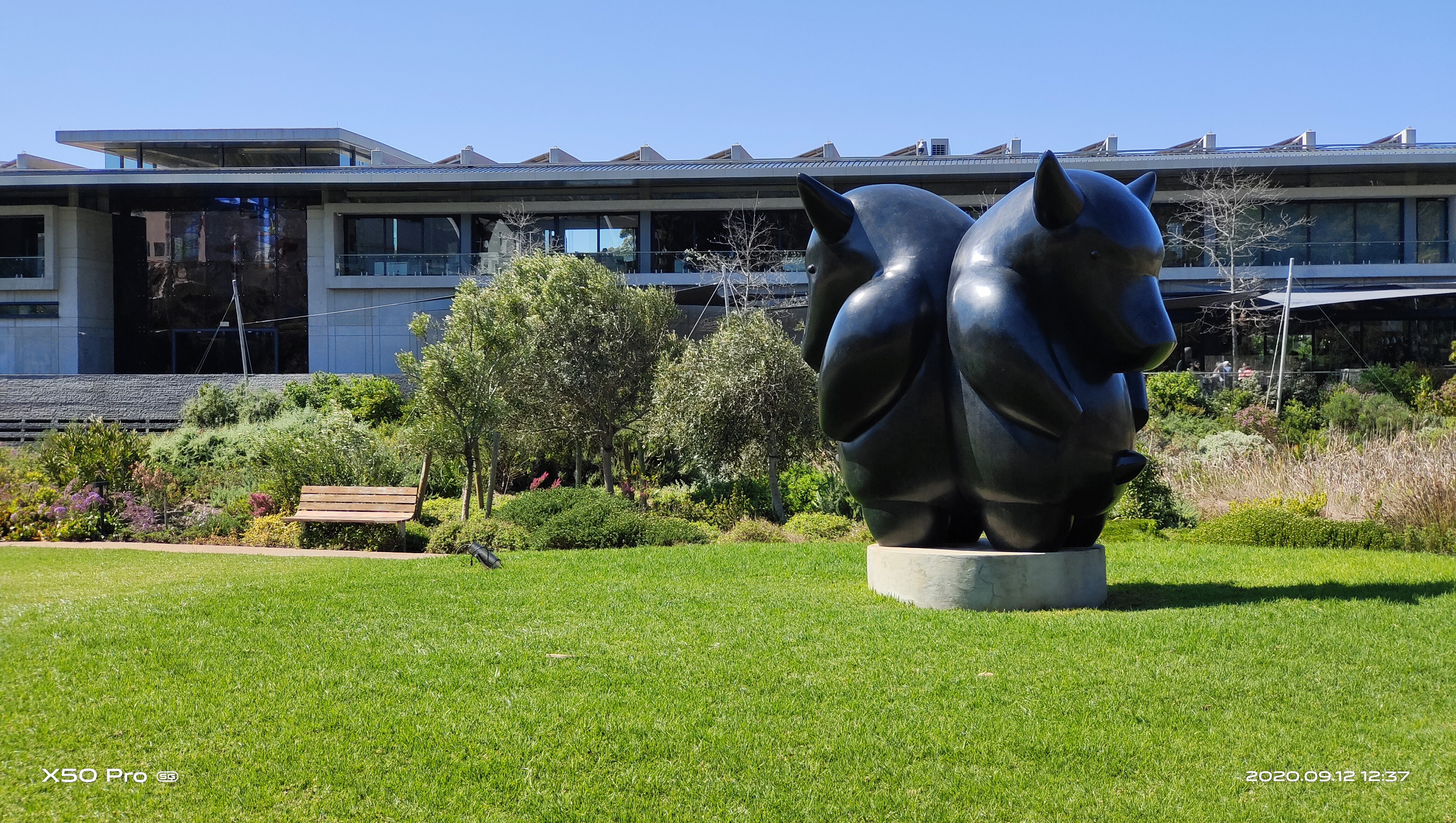Vivo X50 Pro review
Two-minute review
Vivo is a powerful global, brand and part of a bigger company that includes two other premium phone brands: Oppo and OnePlus. Over the last year Vivo has launched a number of budget models in South Africa, but the X50 Pro completely changes that game. It's a premium phone through and through, from its frosted glass body panel and beautiful OLED screen to its 5G connectivity and extremely advanced camera system. So while it has strikingly good looks and feels fantastic in hand, the real achievements are mostly technical.
Its main shooter is a 48MP sensor mounted on a gimbal. This is what is used in the film industry to keep a camera steady while it travels over uneven ground or while the user is busy moving. The 5-axis gimbal system used in the X50 Pro sees the main sensor and lens floating on ball bearings which allow it to correct itself so you get perfectly smooth videos even if you're filming on the move. Keeping things steady also allows the X50 Pro to produce brilliant low light and night time shots using longer exposures and a number of other tricks.
Jump to...

Release date and price
Design
Display
Camera
Specs and performance
Should I buy it?
And there's more, of course, including a 13MP wide angle camera, an 8mp specialised portrait camera and an 8MP sensor with 5x optical zoom.
To round out the package you get last year's top processor, the Qualcomm Snapdragon 765G, supported by a very generous 8GB of RAM and 256GB pf storage. And the screen, which proved very rich in colour detail, refreshes at 90Hz like most other flagship phones from the leading manufacturers.
While there was almost nothing to fault the Vivo X50 Pro: it looks and feels fantastic to use, and has top specs, we still found ourselves unwilling to take a R20,000 gamble on a brand which has not yet proven itself at the top end of the market against the likes of Samsung, Apple and Huawei.

Release date and price
The Vivo X50 Pro was launched worldwide in August 2020. It is now available in South Africa in two colours, blue and grey, for ZAR19,000 (£870).
Design
The Vivo X50 Pro bucks the trend of swapping out the (overly fragile) glass backing on flagship phones for more resilient materials, like polycarbonate or plastic as seen on the Samsung Note 20 and ceramic as used on the Huawei P40 series. The lightly frosted glass on the X50 Pro is a delight to the touch and provides just enough traction to make things feels a little bit more secure in hand.
The camera bump on the rear is fairly large and, placed off centre, it does make the phone a little less stable when used on a flat surface. Of course, slip on the clear silicone cover provided in the box and you've solved that problem without hiding away that satin finish in the back.
Vivo claims this is the thinnest 5G phone on the market and, standing just 8mm thick, this is certainly a shade skinnier than both the Huawei P40 and Samsung Note 20. However, we clocked the LG Velvet 5G at 7.9mm thick (and also a lot cheaper than the X50 Pro).
Display

The 6.56-inch AMOLED is very impressive with a very wide colour gamut visible in our (real-world, unscientific) tests. Brightness and contrast both got up extremely high, which is nothing less than we expect from a phone in this price band.

Cameras
- Unique gimbal stabilisation
- 48MP main shooter, 13MP portrait , 8MP wide-angle, 8MP telephoto
- Strong low-light performance
This where the X50 Pro truly shines with a sophisticated 4 camera array on the rear.
The primary camera is a 48MP sensor mounted on a unique 5-axis mechanical gimbal which floats on ball bearings. Vivo claims this gives it many times the stability of the optical image stabilisation provided by other camera systems. This is the only phone camera we are aware of using such a system. When combined with autofocus object tracking it means videos shot on the move stay smooth and in focus throughout. The various low light and night scene modes also benefit from the gimbal, allowing for sensational results from longer exposure shots possible through the gimbal stabilisation.
By default, all the 48MP shots use pixel binning to create a more accurate and more manageable 12MP photo. However, you can set it in 48MP ultra high definition mode if you want a full spectrum photo which will come in around 20MB large.
After the gimbal-mounted camera, the most exciting is the 8MP sensor with 5x optical zoom feature. These pictures were accurate enough in colour and focus, although we struggled to take decent handheld shots when we pushed this to the limit using the 60x hybrid zoom on offer. While the optical zoom is probably on par with Samsung and Huawei, the hybrid zoom simply doesn't measure up as well.
The ultrawide-angle lens delivered pictures that were sharp all the way to the edge of the frame, which is commendable as few wide-angle lenses get that completely right. We were unable to fully comprehend what the special 13MP portrait sensor provided that the 48 MP main shooter did not, but portrait shots certainly shone out.
In practice all these features, both hardware and software processing, combined into a truly full-featured photo-taking experience. Shooting in various modes, with extreme zoom, gimbal stabilisation and low light settings, only the most extreme experiments produced dodgy photos. Otherwise, the versatility of this camera setup gives the photo enthusiast loads of options.
Video capture tops out at 4K@60fps, although this limits you to digital zoom only (you can deploy the 5x optical zoom), which makes a certain amount of sense. Switching to the most stable video mode limits you to FHD@60fps which also simply makes sense since you are cropping in on your full sensor to keep objects properly in frame to achieve stability.
Camera samples
















Specs and performance
Under the hood the X50 Pro is running Qualcomm's Snapdragon 765G which, coupled with the Adreno 620 graphics and the 5G modem, is one of last year's top performers. So, on paper it might be pipped by the Snapdragon 800 series chips in all 2020's big-name flagships, in practice it still delivers plenty of horsepower for all today's applications and games.
In practice, the generous allocation of 8GB RAM will more than compensate for any multitasking or any other heavy lifting disadvantage you might imagine.
The inclusion of 256GB storage as standard is also noted, where 128GB is more typical at this price point.

Should you buy it?
Buy it if...
You are a serious snapper
The flexible camera options provided by the X50 were right up there with the best systems that Huawei, Samsung and Apple have on offer. Arguably the gimbal on the X50 Pro makes this camera unique and certainly better than competitors in low light photography.
You are a multimedia maven
Whether you're shooting, editing and uploading multimedia on the street, or passing the time streaming YouTube and Spotify on your commute, it all goes better with 5G.
Don’t buy it if...
You're a brand loyalist
This is a lot of money to spend on a phone brand with very limited pedigree for delivering high end experiences. For this kind of money you might want to play safe and stay with the brand you know and trust.
First reviewed: 20 September 2020
Comments
Post a Comment